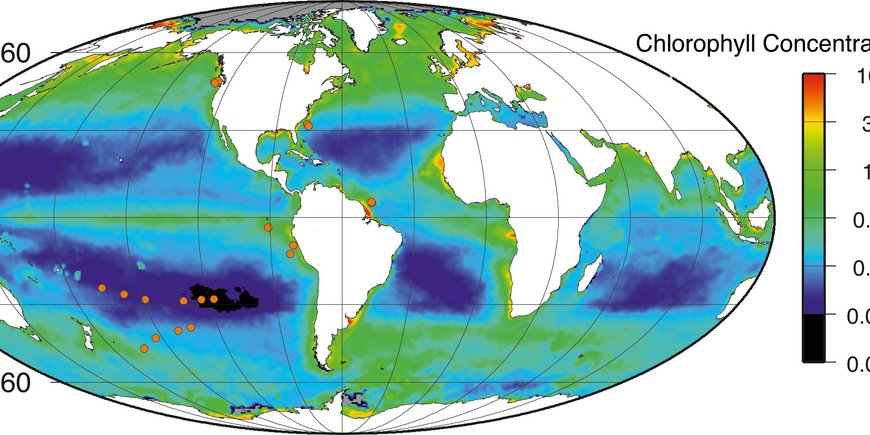New estimate of living biomass
27.08.2012 | Potsdam: Previous estimates about the total mass of all life on our planet have to be reduced by about one third. This is the result of a study by a German-US science team published in the current online issue of „Proceedings of the National Academy of Science“ (PNAS).
According to previous estimates about one thousand billion tons of carbon are stored in living organisms, of which 30% in single-cell microbes in the ocean floor and 55 % reside in land plants. The science team around Dr. Jens Kallmeyer of the GFZ German Research Centre for Geosciences and University of Potsdam has now revised this number: Instead of 300 billion tons of carbon there are only about 4 billion tons stored in subseafloor microbes. This reduces the total amount of carbon stored in living organisms by about one third.
Previous estimates were based on drill cores that were taken close to shore or in very nutrient-rich areas. “About half of the world’s ocean is extremely nutrient-poor. For the last 10 years it was already suspected that subseafloor biomass was overestimated” explains Dr. Jens Kallmeyer the motivation behind his study. “Unfortunately there were no data to prove it”. Therefore Kallmeyer and his colleagues from the University of Potsdam and the University of Rhode Island, USA, collected sediment cores from areas that were far away from any coasts and islands. The six-year work showed that there were up to one hundred thousand times less cells in sediments from open-ocean areas, which are dubbed “deserts of the sea” due to their extreme nutrient depletion, than in coastal sediments.
With these new data the scientists recalculated the total biomass in marine sediments and found these new, drastically lower values.
Despite of the high logistic and financial efforts for marine drilling operations there are more data of the abundance of living biomass in the sea floor than of their abundance on land. „Our new results show the need to re-examine the other numbers as e.g. the amount of carbon in deep sediments on land,“ Jens Kallmeyer states. In particular the research into the „Deep Biosphere“ is still in the fledgling stages; this is life that can be found in kilometer’s depth inside the Earth’s crust.The new findings contribute to a better picture of the distribution of living biomass on Earth.
Jens Kallmeyer et al.: “Global distribution of microbial abundance and biomass in subseafloor sediment”, PNAS, www.pnas.org/cgi/doi/10.1073/pnas.1203849109
Pictures in a printable resolution








![[Translate to English:] Torsten Sachs in front of a climate station on a field](/fileadmin/_processed_/3/9/csm__TorstenSachs_bearbeitet_GS_4a1365ef84.jpeg)

![[Translate to English:] left image flood at the Ahrtal: image from above, several houses are flooded; left image:: Heidi Kreibich;](/fileadmin/_processed_/4/4/csm_Bild2_9af0130e9f.png)



![[Translate to English:] Start der Vega Rakete](/fileadmin/_processed_/6/4/csm_20231201-kachel_Vega-VV23-launch_ESA-CNES-Arianespace_706716b68c.jpeg)









![[Translate to English:] Poster exhibition at the Brandenburg Hydrogen Day at the GFZ, some participants in the foreground](/fileadmin/_processed_/6/5/csm_Erster_Brandenburgischer_Wasserstofftag_GFZ_402fcec95e.jpeg)
![[Translate to English:] Group picture of the participants](/fileadmin/_processed_/9/4/csm_20231108_CAWa-Workshop-Tashkent_Gruppenbild_99ea779d8a.jpeg)

![[Translate to English:] [Translate to English:] Hörsaal](/fileadmin/_processed_/e/6/csm_H%C3%B6rsal_e21ac645fb.jpeg)


![[Translate to English:] The Delegations in the Historic Library on the Telegrafenberg. In the back there are from left to right, the Dutch Ambassador for Germany, Ronald van Roeden, the Dutch Minister for Education, Culture and Science, Robbert Dijkgraaf and the scientific director of the GFZ, Susanne Buiter.](/fileadmin/_processed_/d/b/csm_Kachel-2_9eba4b4212.jpeg)

